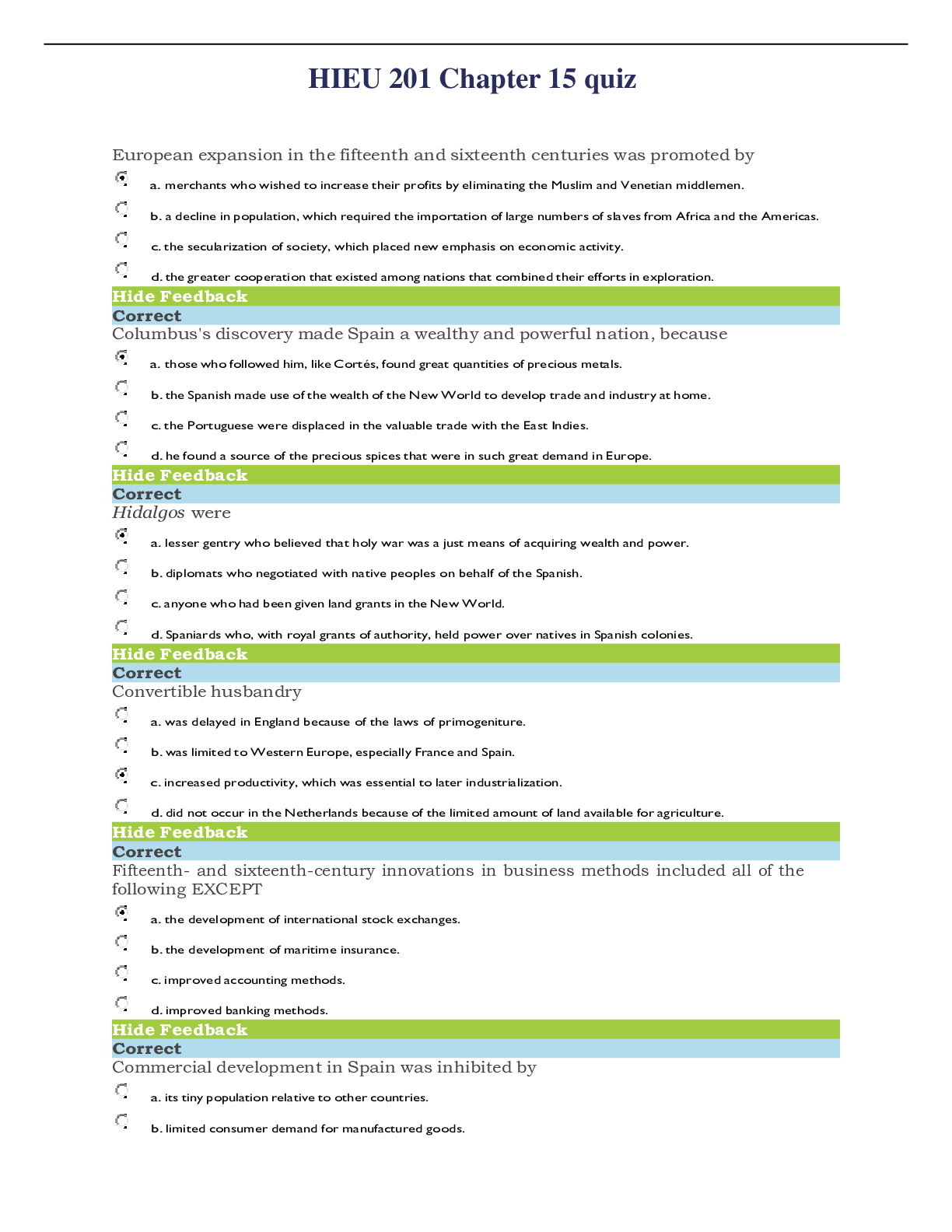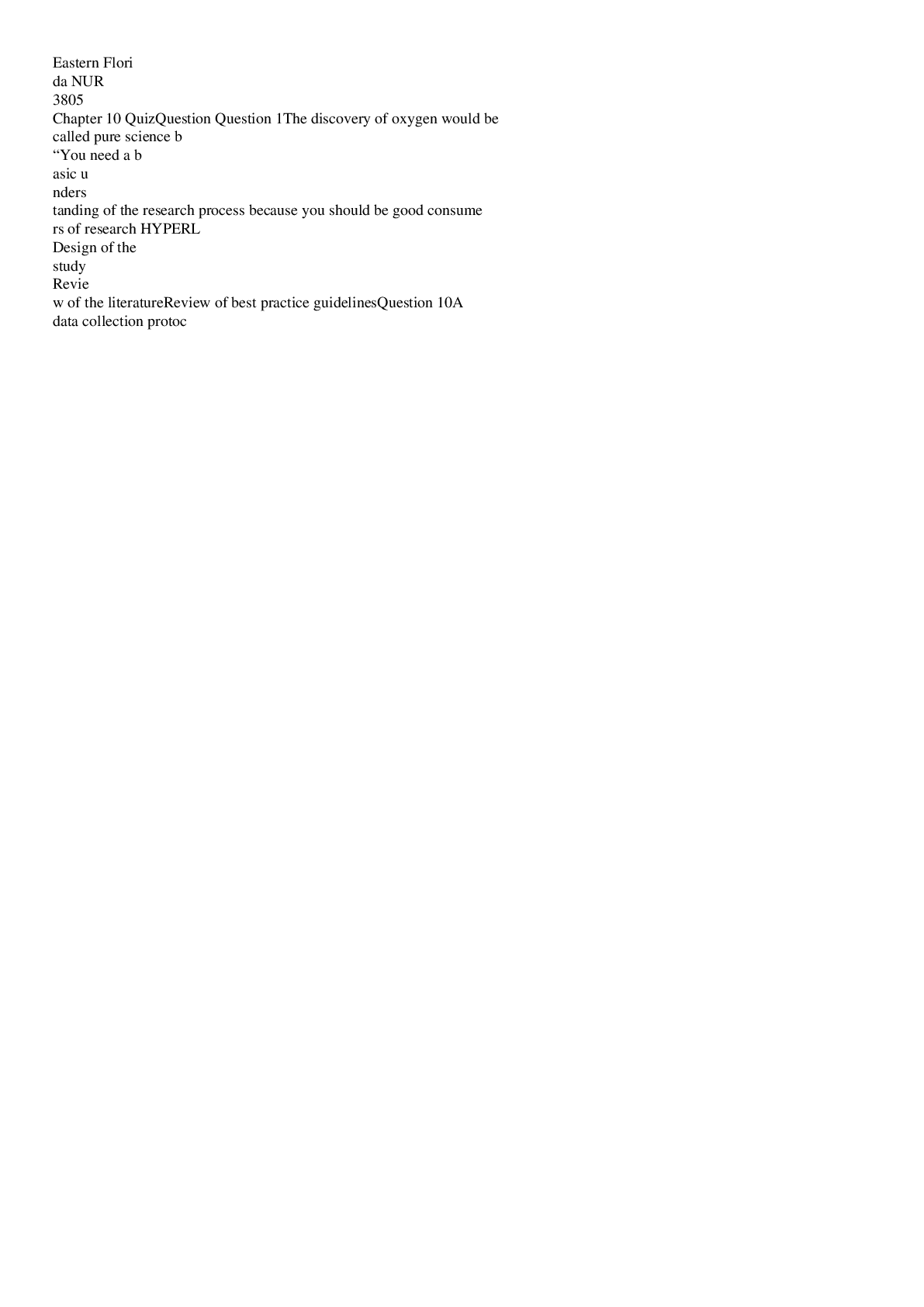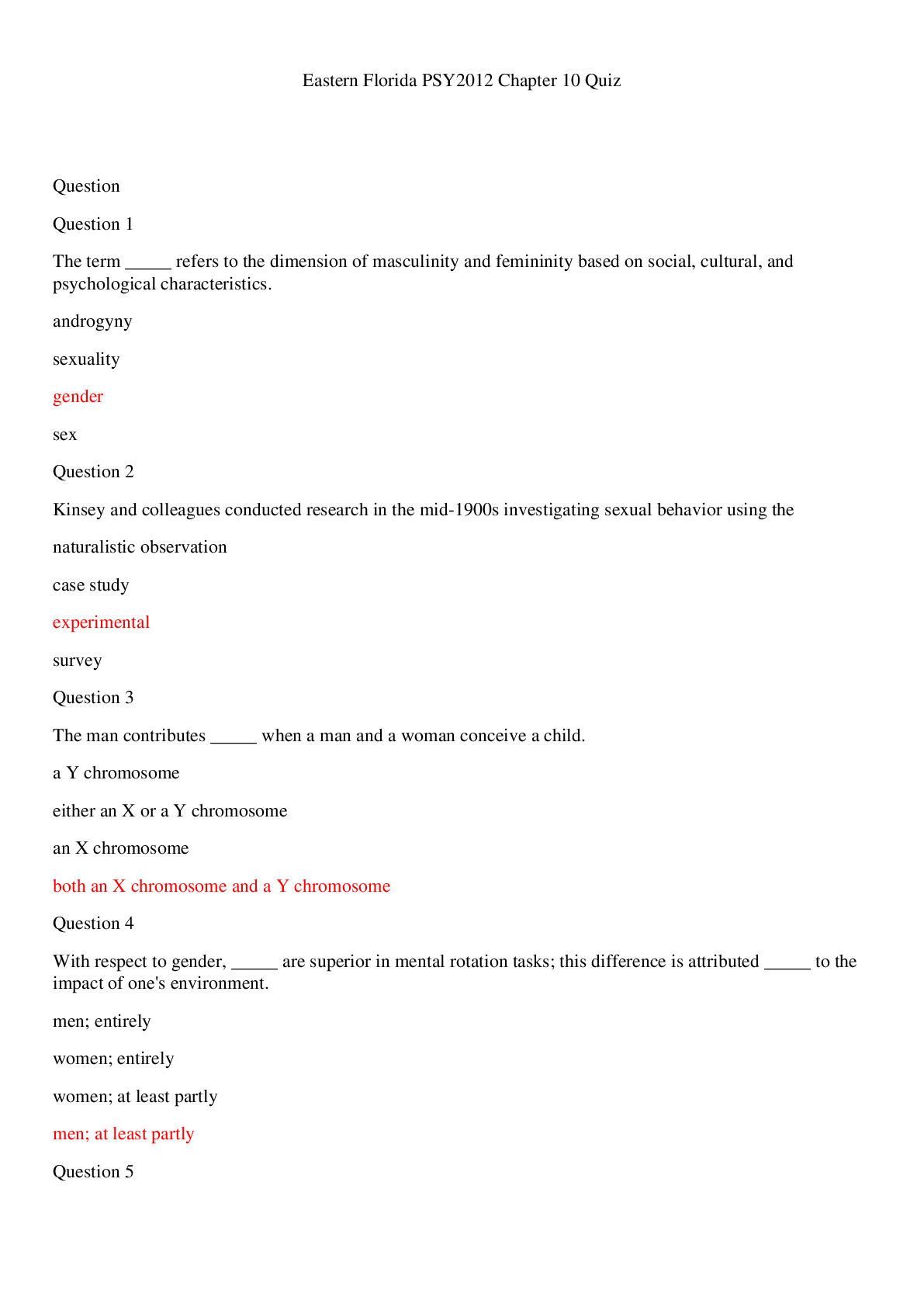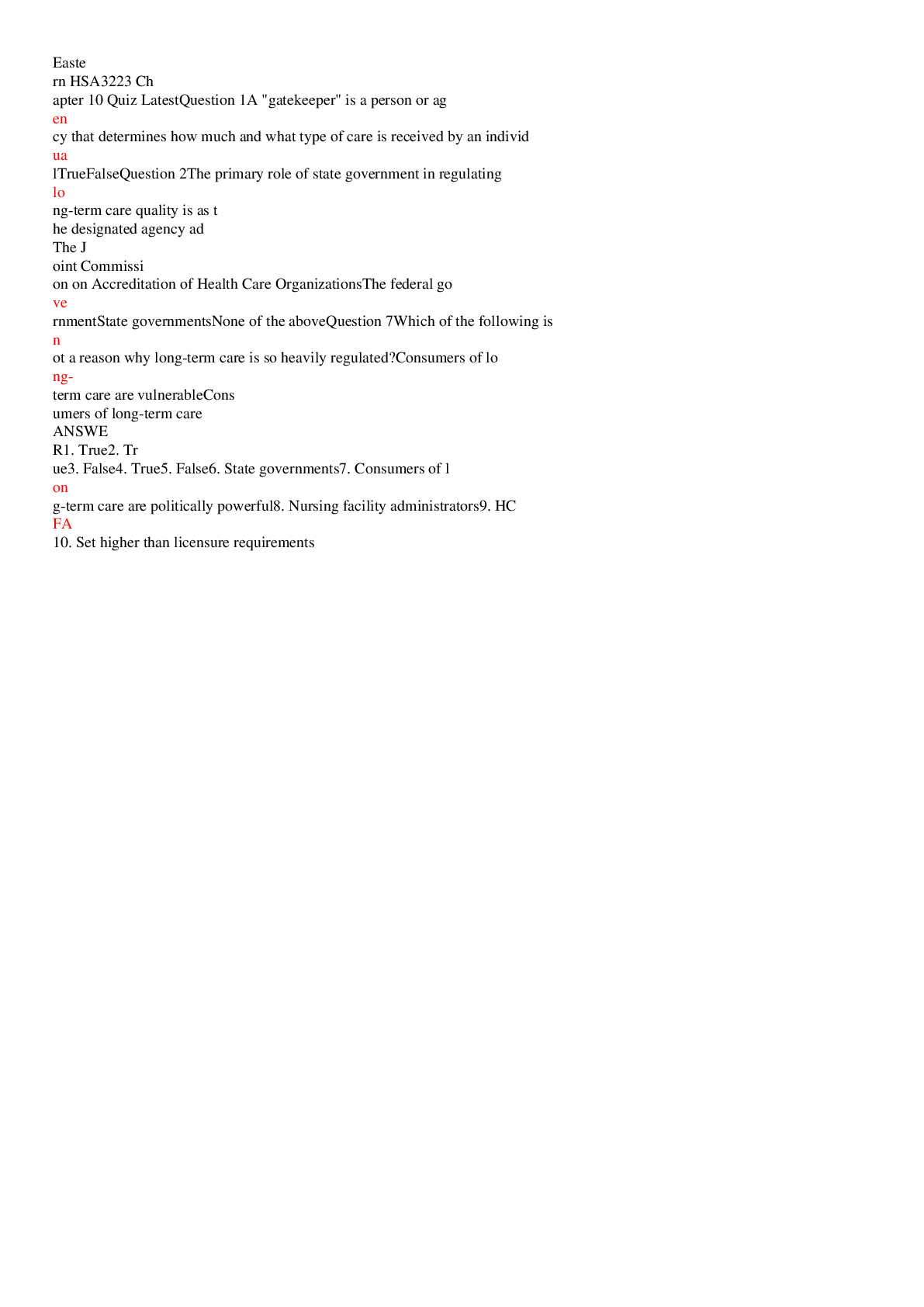Religious Studies > EXAM > HIEU 201 CHAPTER 10 QUIZ / HIEU201 CHAPTER 10 QUIZ (COMPLETE ANSWERS -100% VERIFIED) LIBERTY UNIVERS (All)
HIEU 201 CHAPTER 10 QUIZ / HIEU201 CHAPTER 10 QUIZ (COMPLETE ANSWERS -100% VERIFIED) LIBERTY UNIVERSITY (LATEST 2023)
Document Content and Description Below
HIEU 201 CHAPTER 10 QUIZ / HIEU201 CHAPTER 10 QUIZ (COMPLETE ANSWERS -100% VERIFIED) LIBERTY UNIVERSITY (LATEST 2023)HIEU 201 CHAPTER 10 QUIZ The three-field system a. allowed for increased production... by reducing the amount of land that was left fallow. b. made its biggest impact in southern Europe. c. was replaced with the two-field system. d. allowed animals to graze on two-thirds of the land. • By the thirteenth century, Italian towns a. suffered as trade routes shifted to central Europe and the North Sea. b. were unable to engage in trade because of Byzantine domination. c. suffered as trade routes shifted to northern Europe. d. acted as intermediaries facilitating trade between Europe and the eastern Mediterranean. Medieval guilds a. organized all the craftspeople of a given town into a single group. b. were organized by tradesmen to govern their own economic activities. c. were strictly business organizations, with the sole purpose of making money for their members. d. promoted competition by encouraging individual decision-making. William the Conqueror created a. a vast census of people and property. b. the division of lands into shires, or counties. c. English common law. d. the position of sheriff, a royal agent of the king. King John's costly war with ________ led to the Magna Carta. a. the Spanish kingdoms b. Germany c. Italy d. France Representative institutions grew out of a. the insistence of the clergy that the Bible dictated the need for such bodies. b. popular movements led by wealthy townspeople. c. royal dependence on the nobility for military support. d. the desire of kings to expand their authority and powers. The reform movement in the church in the tenth and eleventh centuries a. abolished the system of cardinals and provided that popes be elected democratically by general church councils. b. granted secular authorities, especially the nobles, more influence over church affairs. c. loosened the strict rules that had governed the lives of monks for centuries. d. emerged as a reaction against the moral laxity and worldliness that had corrupted many monasteries and the papacy. The Investiture Controversy centered on the right to a. invest kings with the powers of their office. b. control the wealth of the church. c. invest the Holy Roman emperor with the power of his office. d. appoint bishops. The church addressed the perceived threat of heresy through a. a reasoned presentation of alternative viewpoints. b. wars that were usually opposed by kings and nobles. c. excommunication, which cut a person off from the heresy in question and was a guarantee of salvation. d. the Inquisition, a permanent tribunal that demanded suspects disprove accusations made against them. The Cathari were a a. radical group of religious dissenters who departed dramatically from mainstream Catholicism. b. wealthy Italian family that raised large sums of money for the papacy. c. monastic order dedicated to a return to early Christian principles. d. group of religious dissenters based in northern Germany. The authority and prestige of the papacy reached its height under Innocent III, partly because he a. sponsored the Fourth Crusade, which was the most successful of all wars against the Muslims. b. allowed greater diversity of practices and beliefs among Christians in Europe. c. was able to win in specific conflicts with the kings of England and France. d. separated the church from secular affairs, thereby avoiding embarrassing political confrontations Which of the following barred the Jews from public office and required them to wear a distinguishing badge on their clothing? a. Pope Gregory VII b. the Fourth Lateran Council c. Moses ben Maimon d. King Edward I of England Europe experienced a revival of trade and commerce by the eleventh century that stemmed in part from a. a decrease in the money supply. b. a revival of Viking attacks. c. diminished agricultural production. d. increased political stability In medieval towns, a. women were prohibited from guild membership throughout Europe. b. women played no part in economic life. c. women often worked alongside their husbands in a variety of crafts. d. guildswomen had many privileges but were strictly forbidden to train apprentices. A primary difference between political developments in England and in France was that a. representative institutions did not exist in France. b. the English Parliament consisted of representatives from the nobles and clergy only. c. England was conquered in 1066, which, in a single event, placed a strong king on the throne to govern the entire country. d. the French nobility gained power at the expense of their king. The Holy Roman Empire was a weak and divided state because a. the pope granted investiture to emperors who devoted little attention to political affairs. b. emperors often became embroiled in Italian and papal politics, thus sapping their strength at home. c. popes refused to grant anyone the imperial title after the death of Charlemagne. d. it was a small territory that lacked sufficient economic resources. Which of the following was NOT one of the seven sacraments of the medieval church? a. almsgiving b. confirmation c. extreme unction d. marriage Which of the following contributed to anti-Jewish feeling during the Middle Ages? a. the Jews' crime of deicide b. the role of Jews as moneylenders c. the Jew's belief in blood libel d. all of the above The Crusades can be described as all of the following EXCEPT a. a sign of vitality and self-confidence in Western Europe. b. a demonstration by the Roman Church of its subservience to the Eastern Orthodox Church. c. part of a general movement of European expansion. d. an attempt by the papacy to assert its preeminence. The Franciscans and the Dominicans were a. divisions within the larger institution of the Inquisition. b. monastic orders that required their members to separate completely from the world. c. rival groups of religious dissenters, both of whom were declared heretical by the papacy. d. religious orders whose members went out into the world to preach the Gospel. [Show More]
Last updated: 1 year ago
Preview 1 out of 5 pages
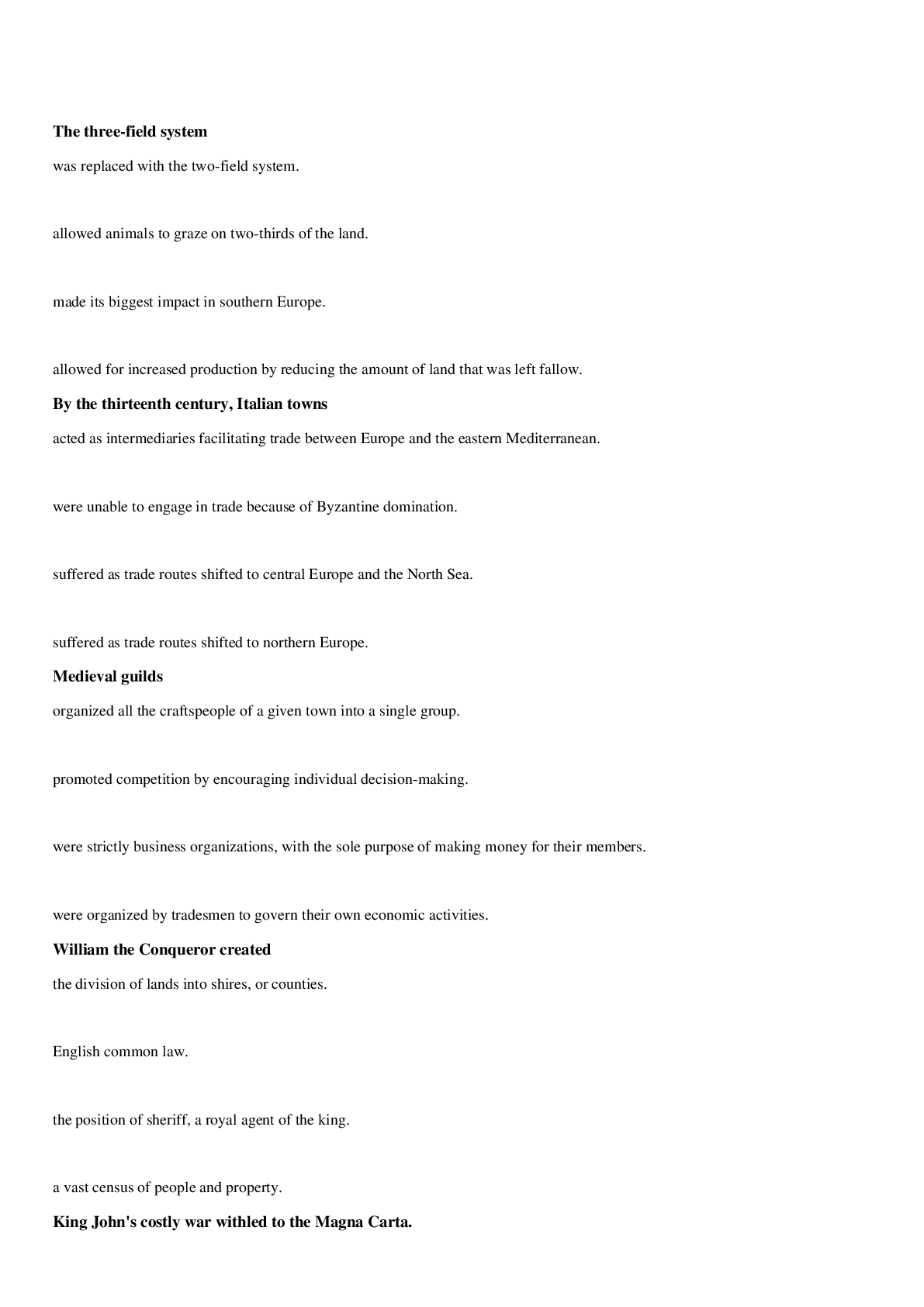
Reviews( 0 )
Document information
Connected school, study & course
About the document
Uploaded On
Feb 28, 2023
Number of pages
5
Written in
Additional information
This document has been written for:
Uploaded
Feb 28, 2023
Downloads
0
Views
48


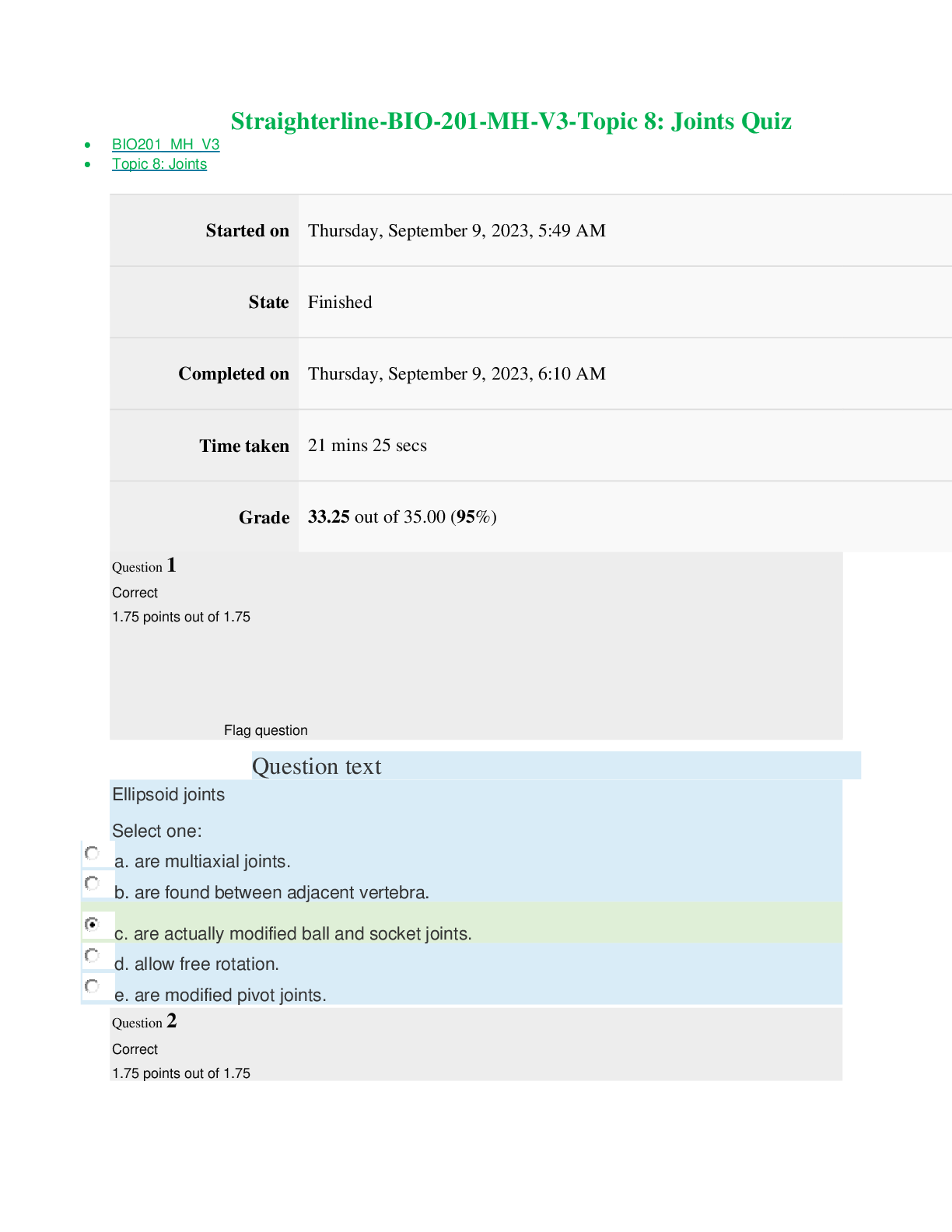
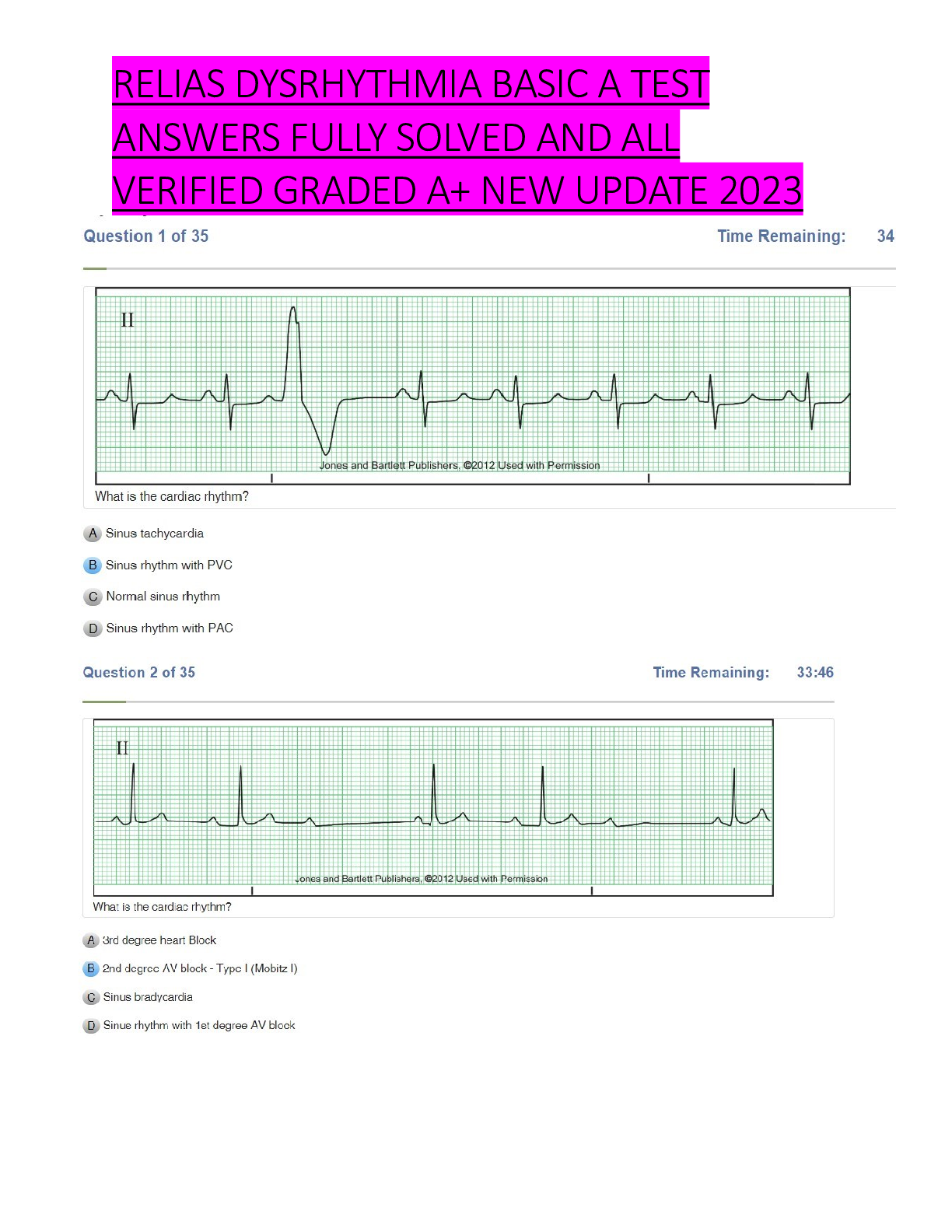
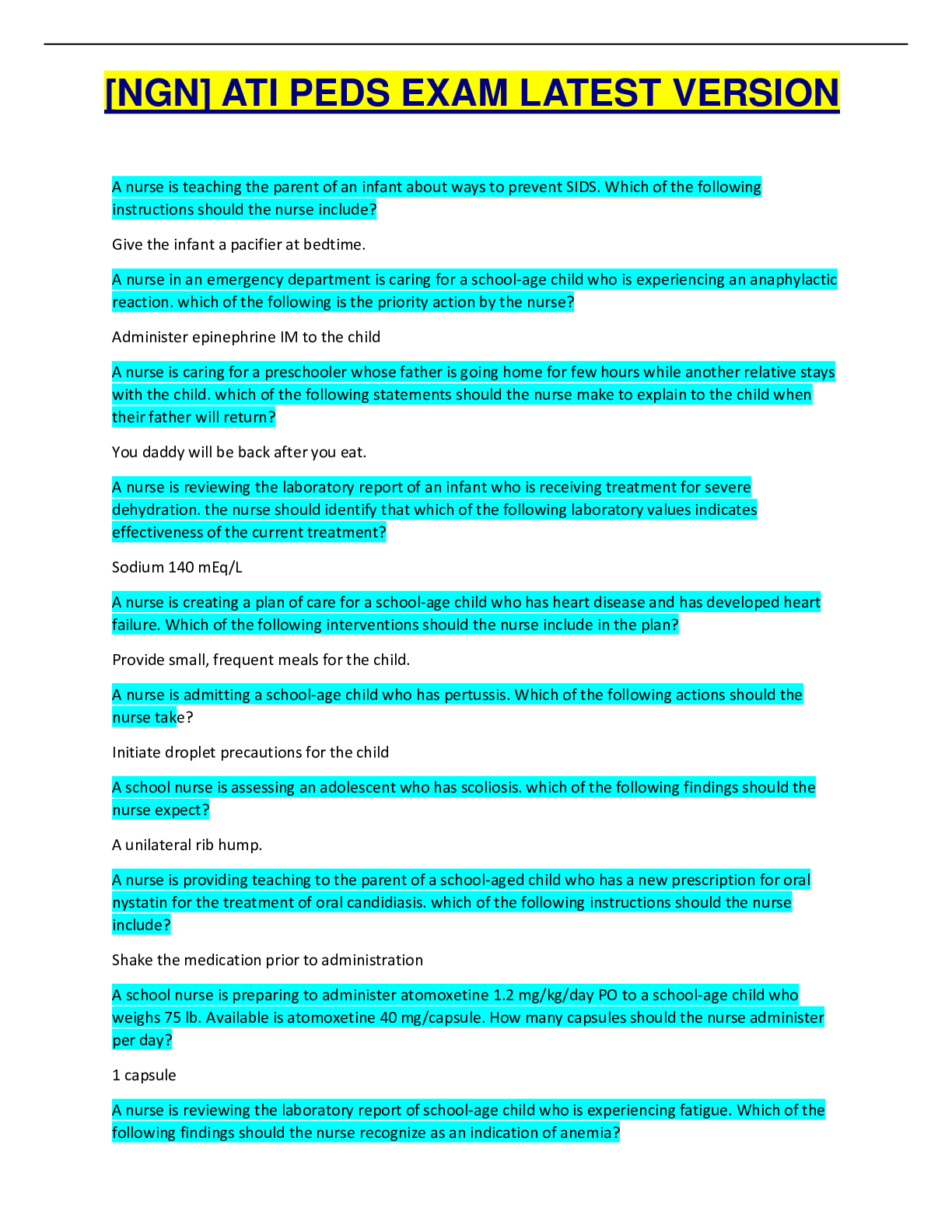


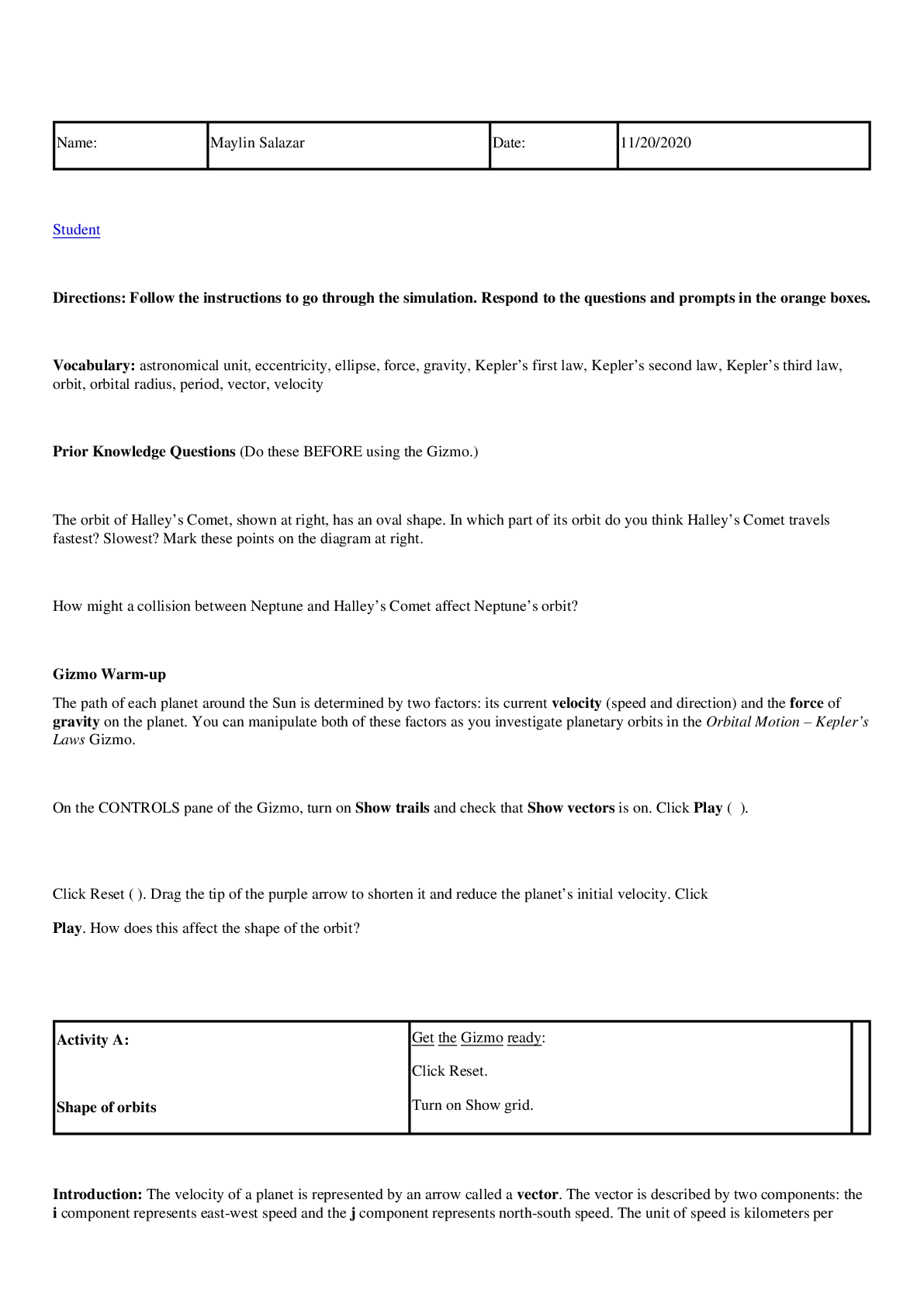


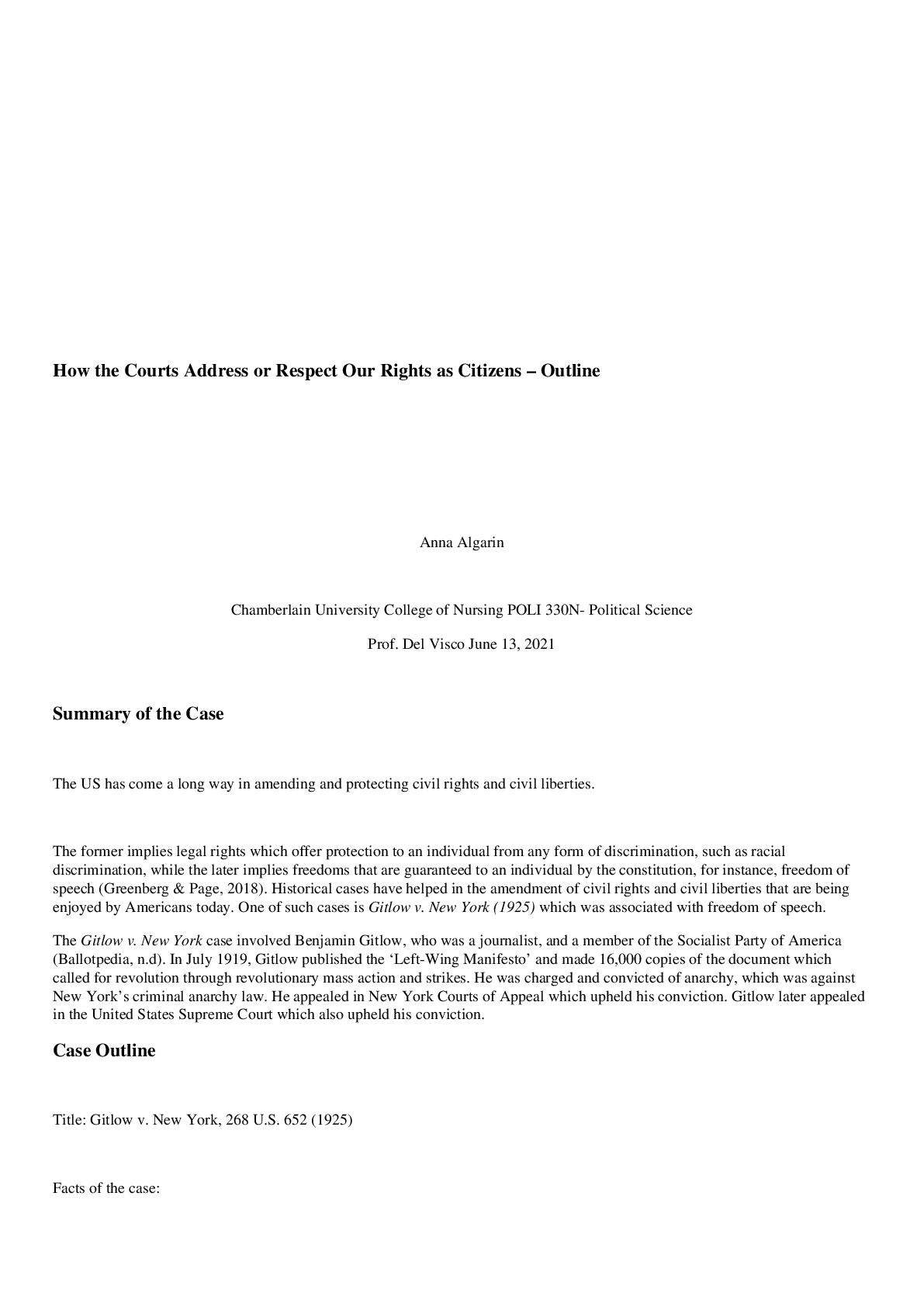
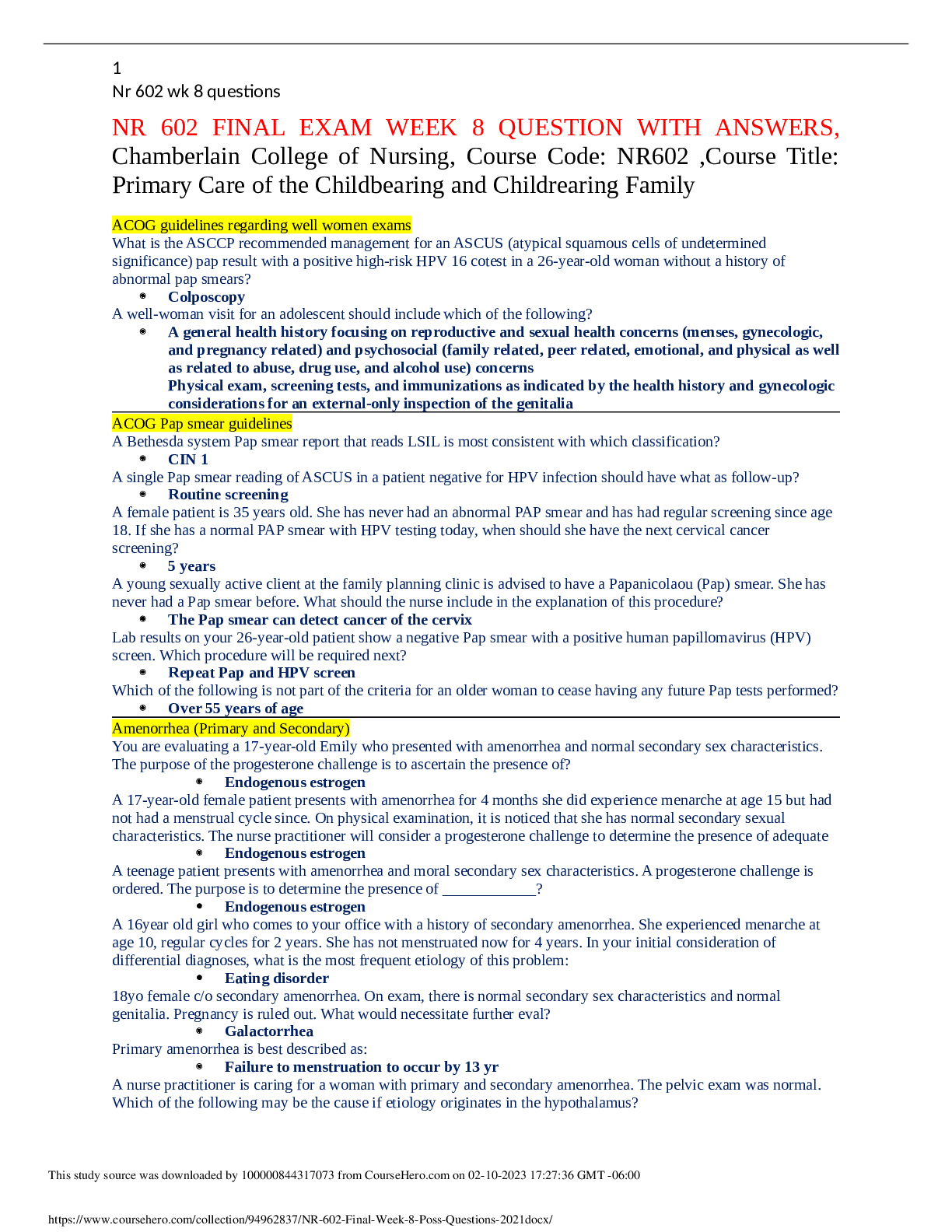




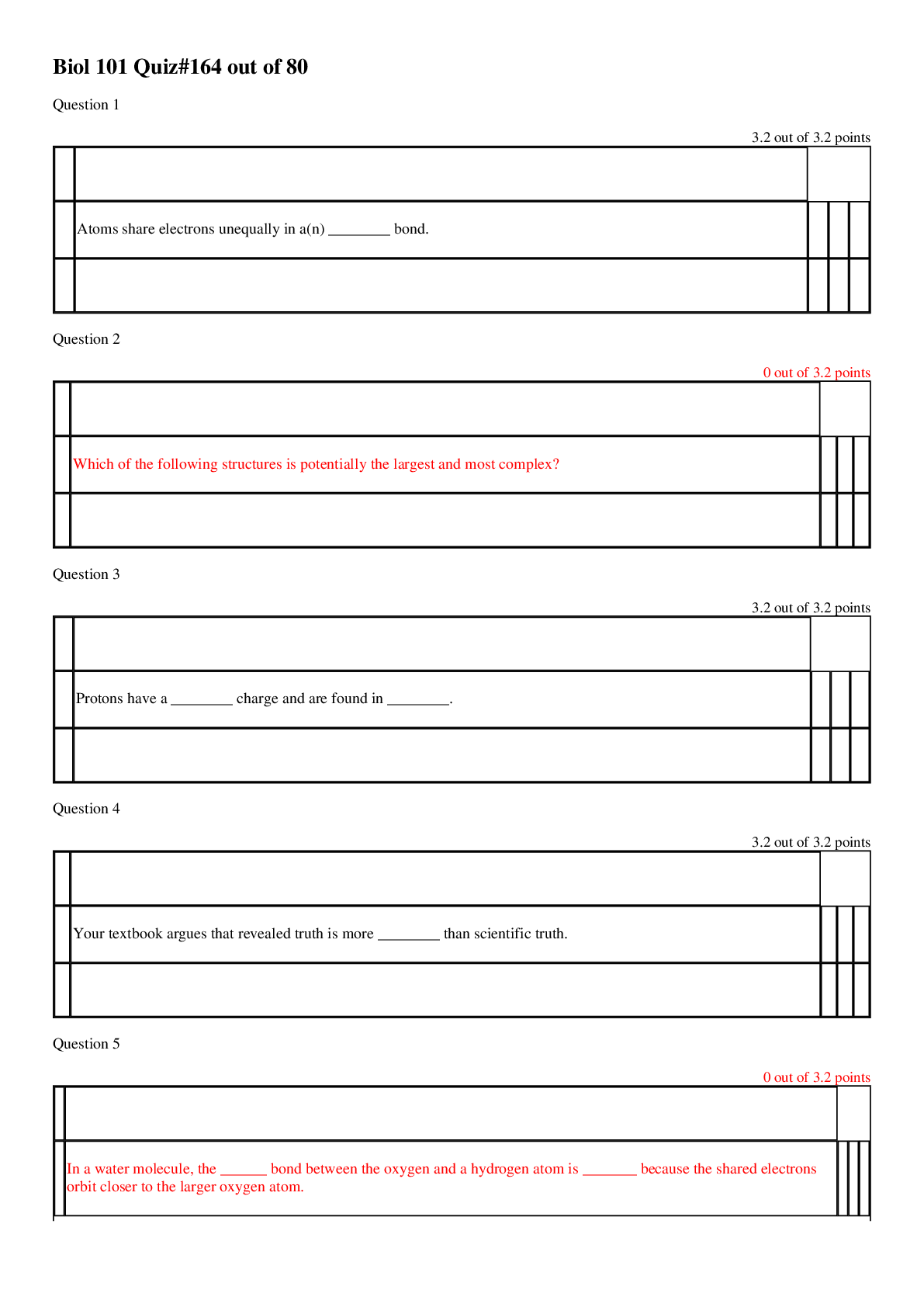

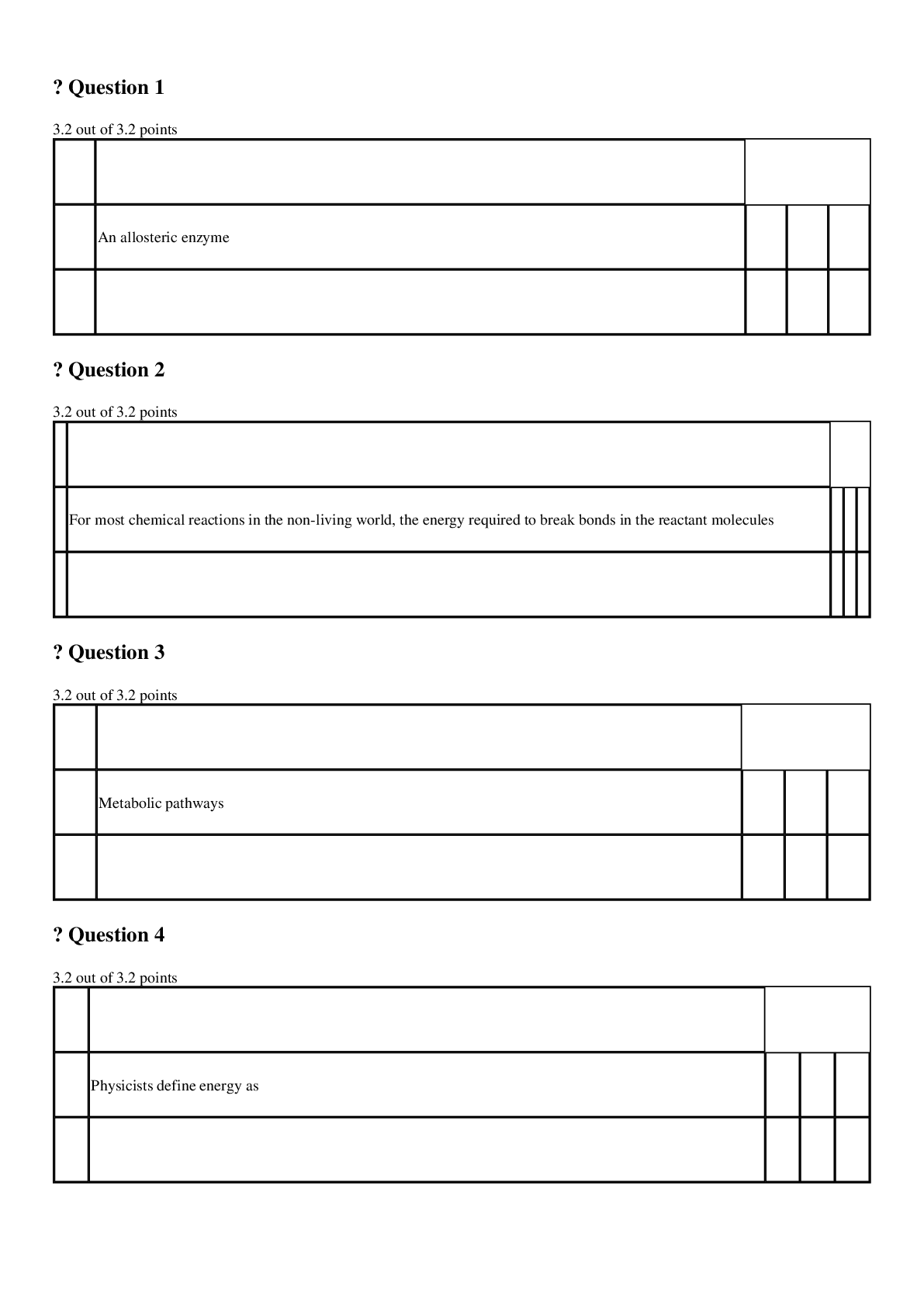
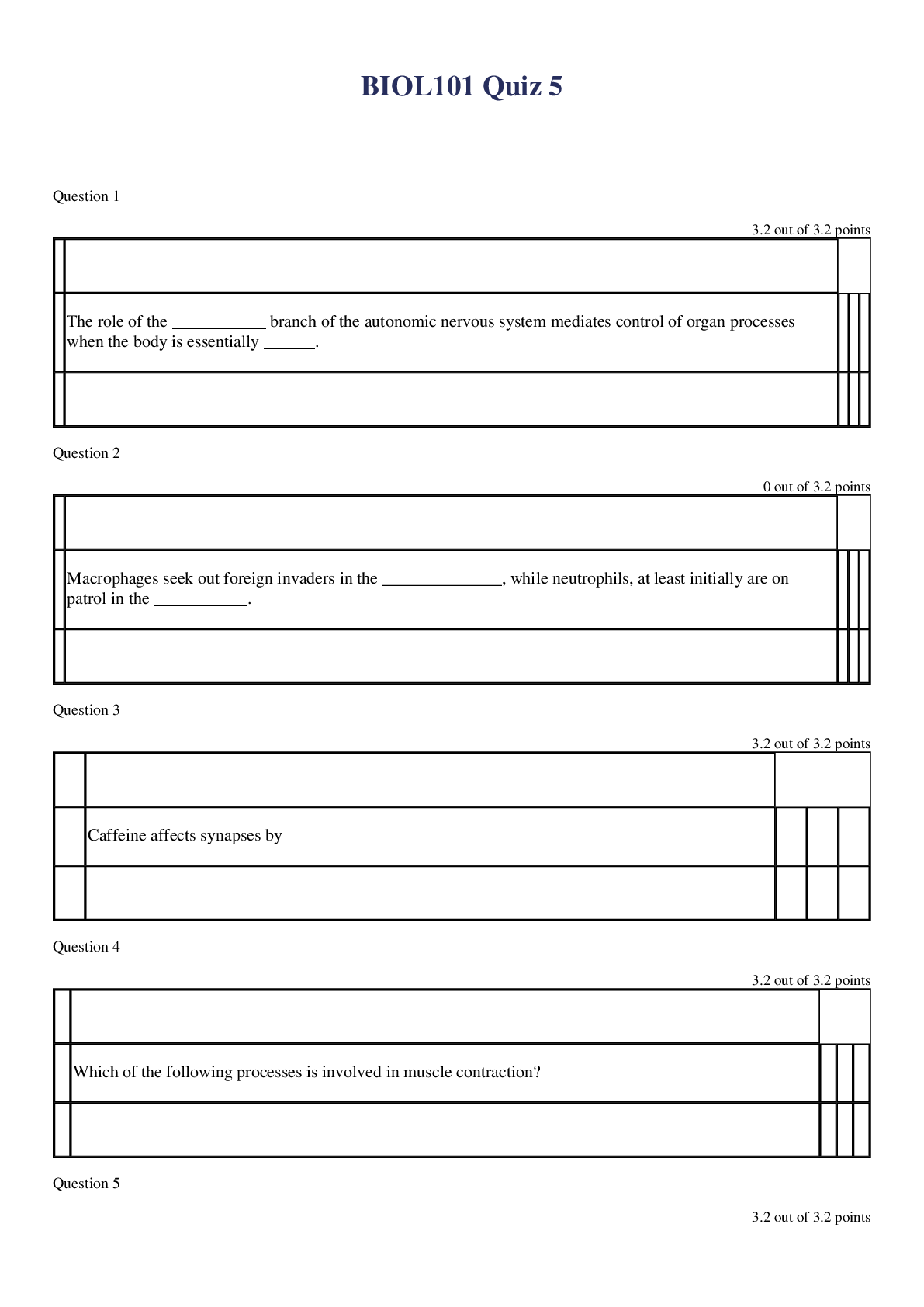
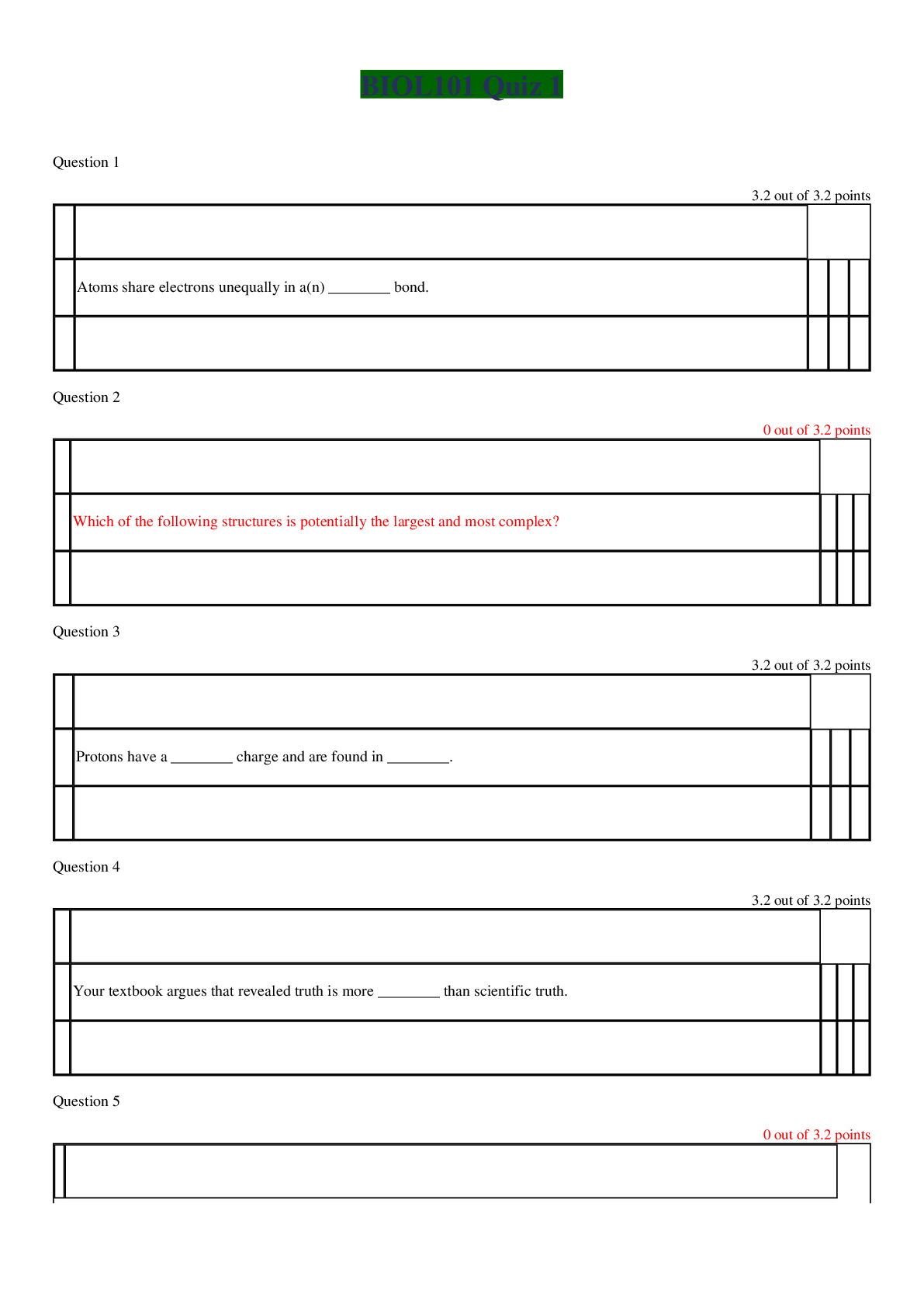
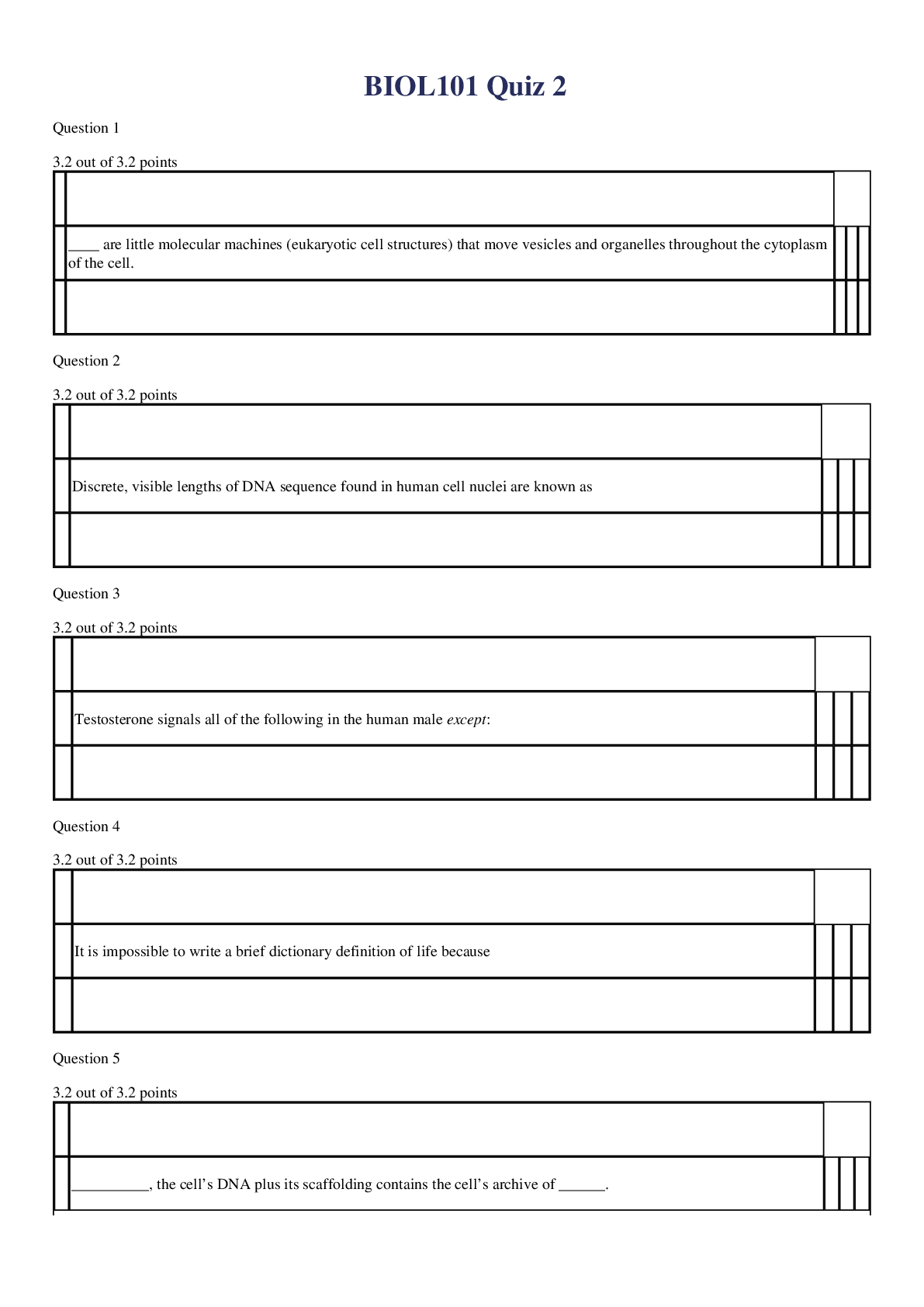

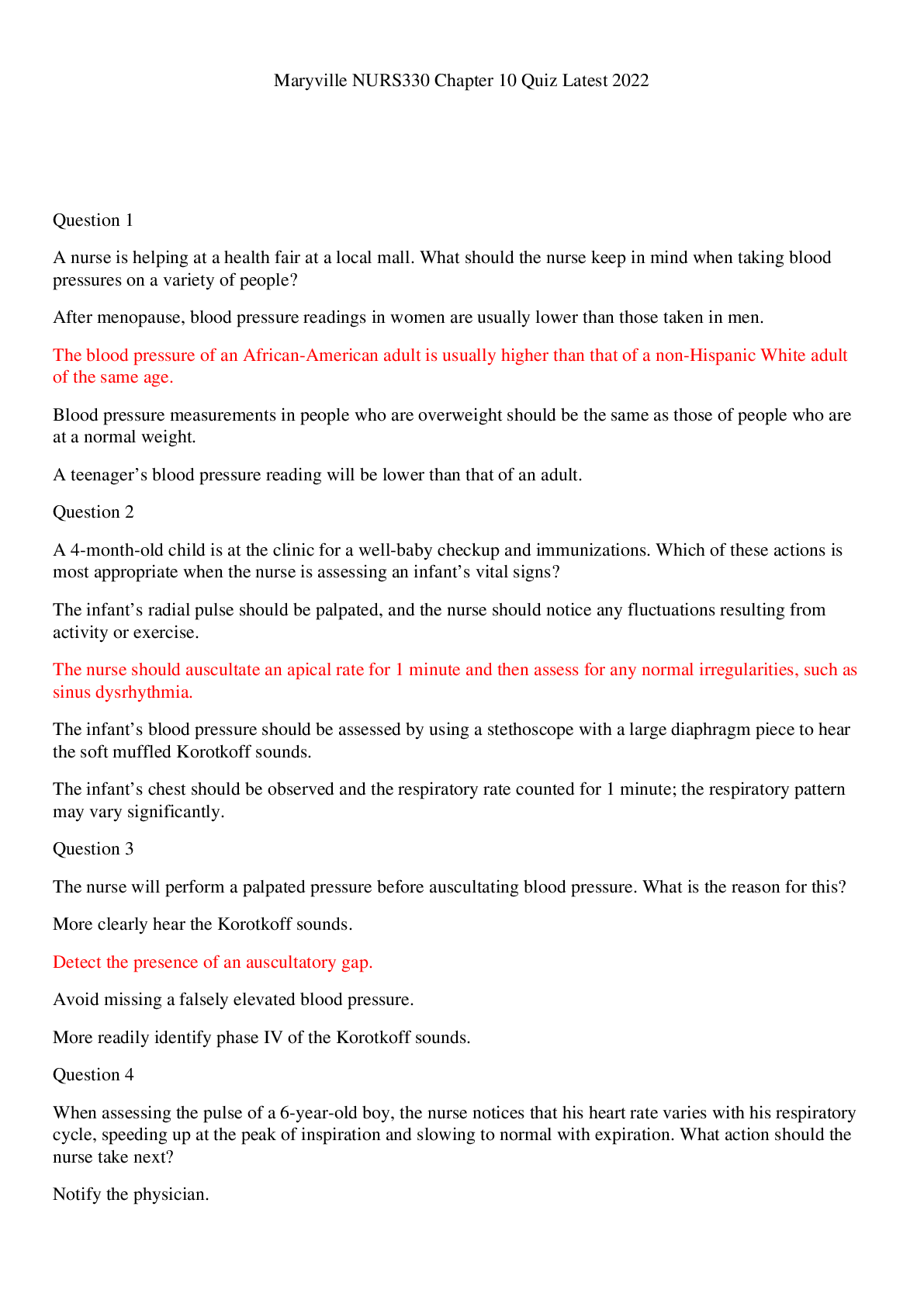
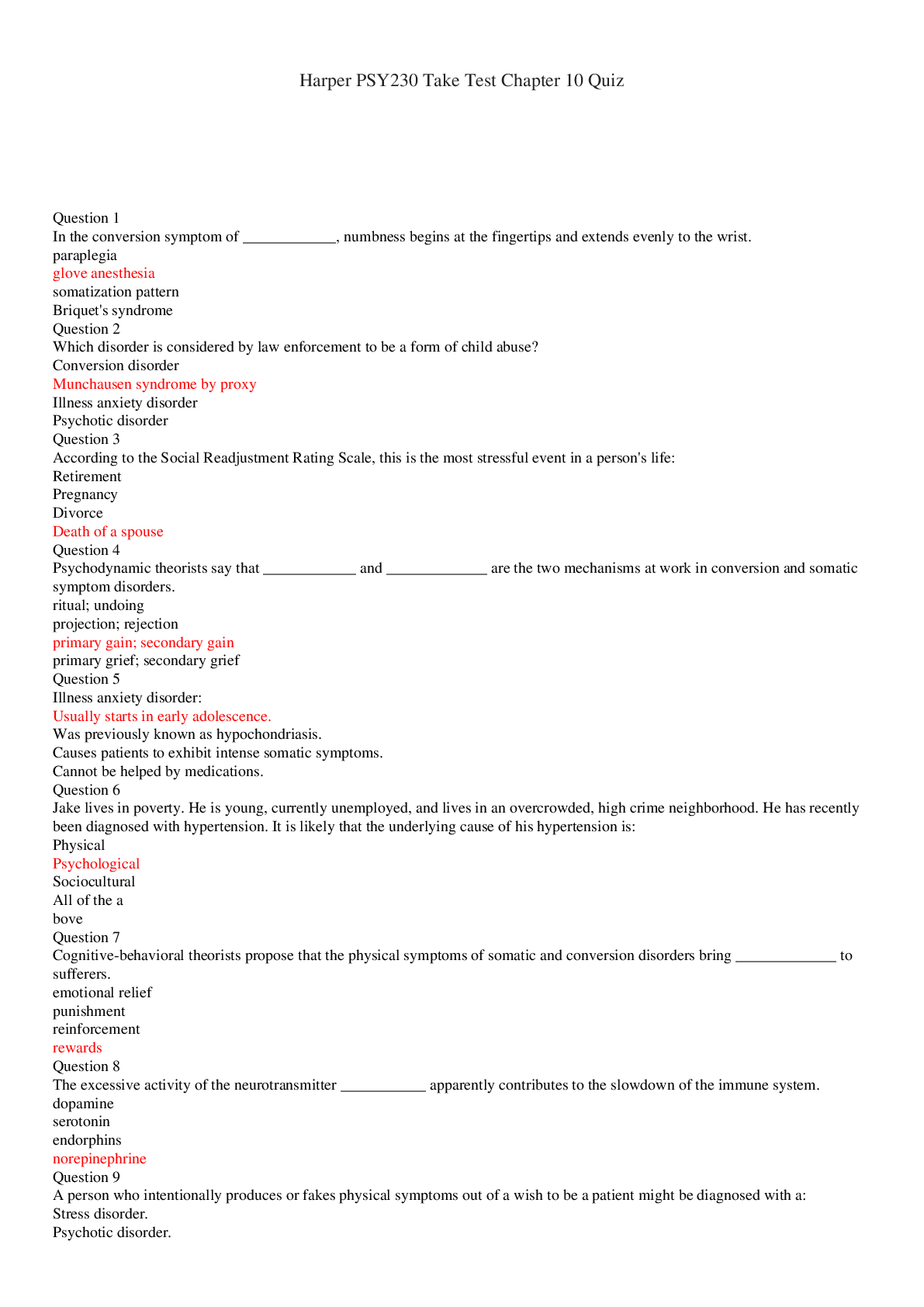
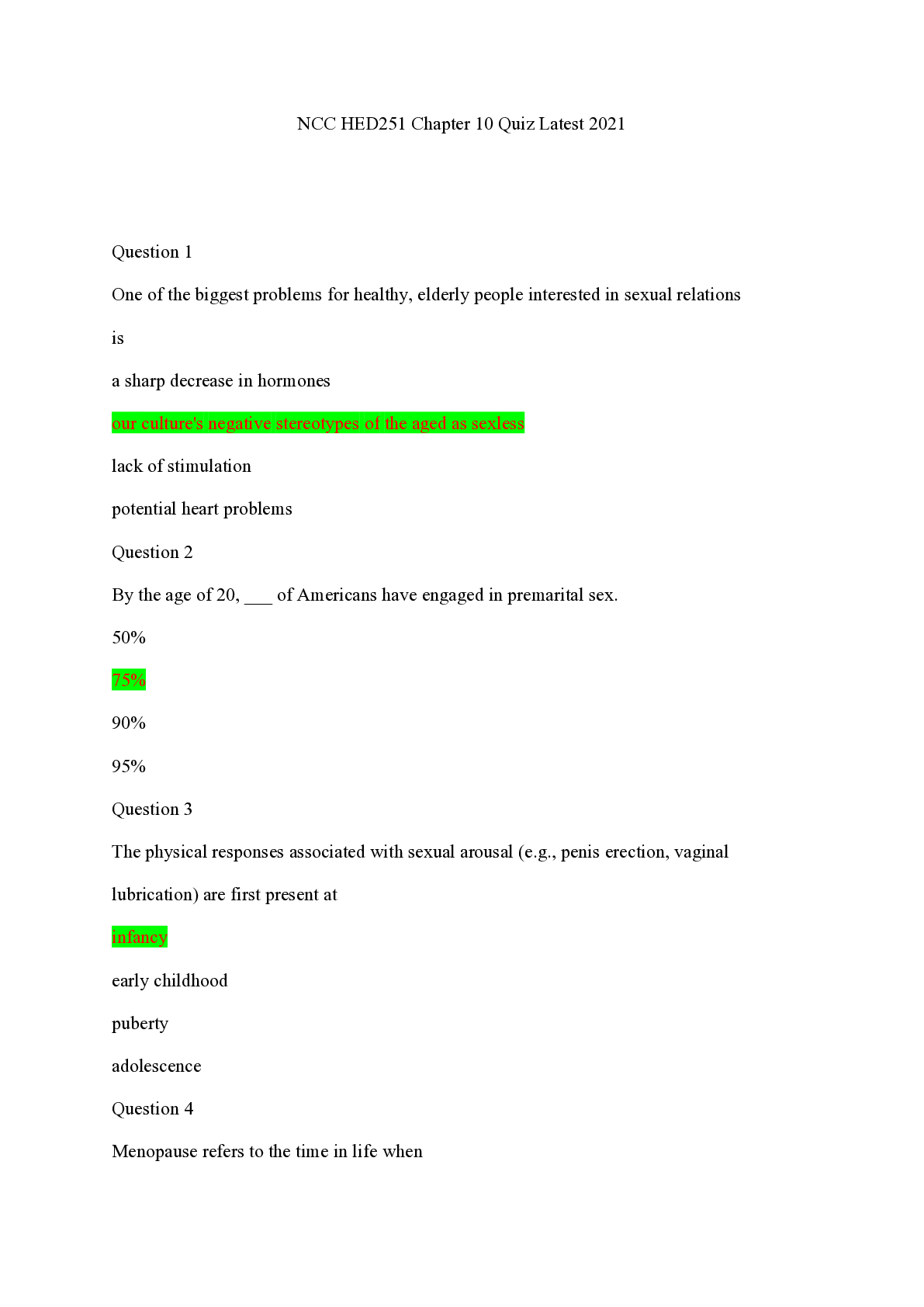
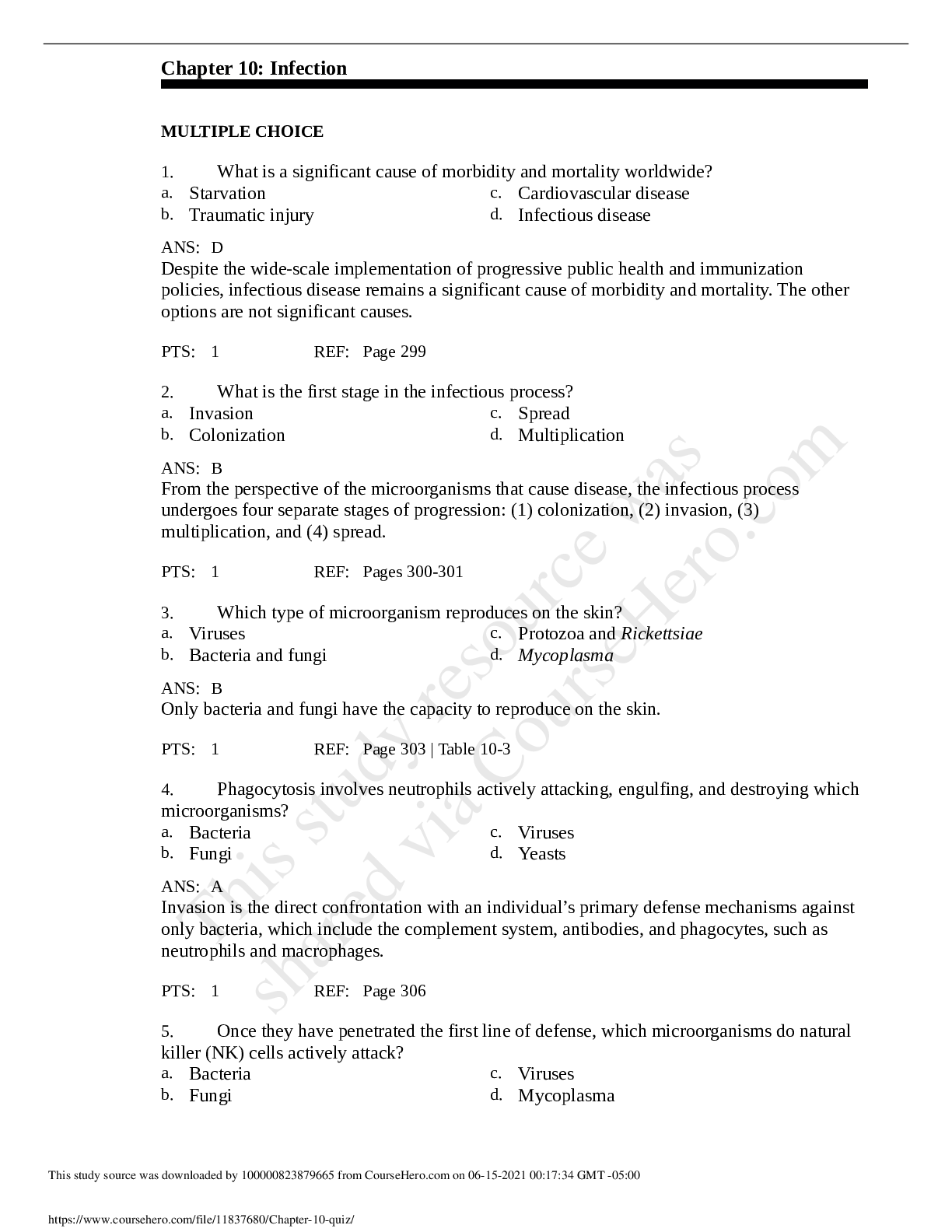
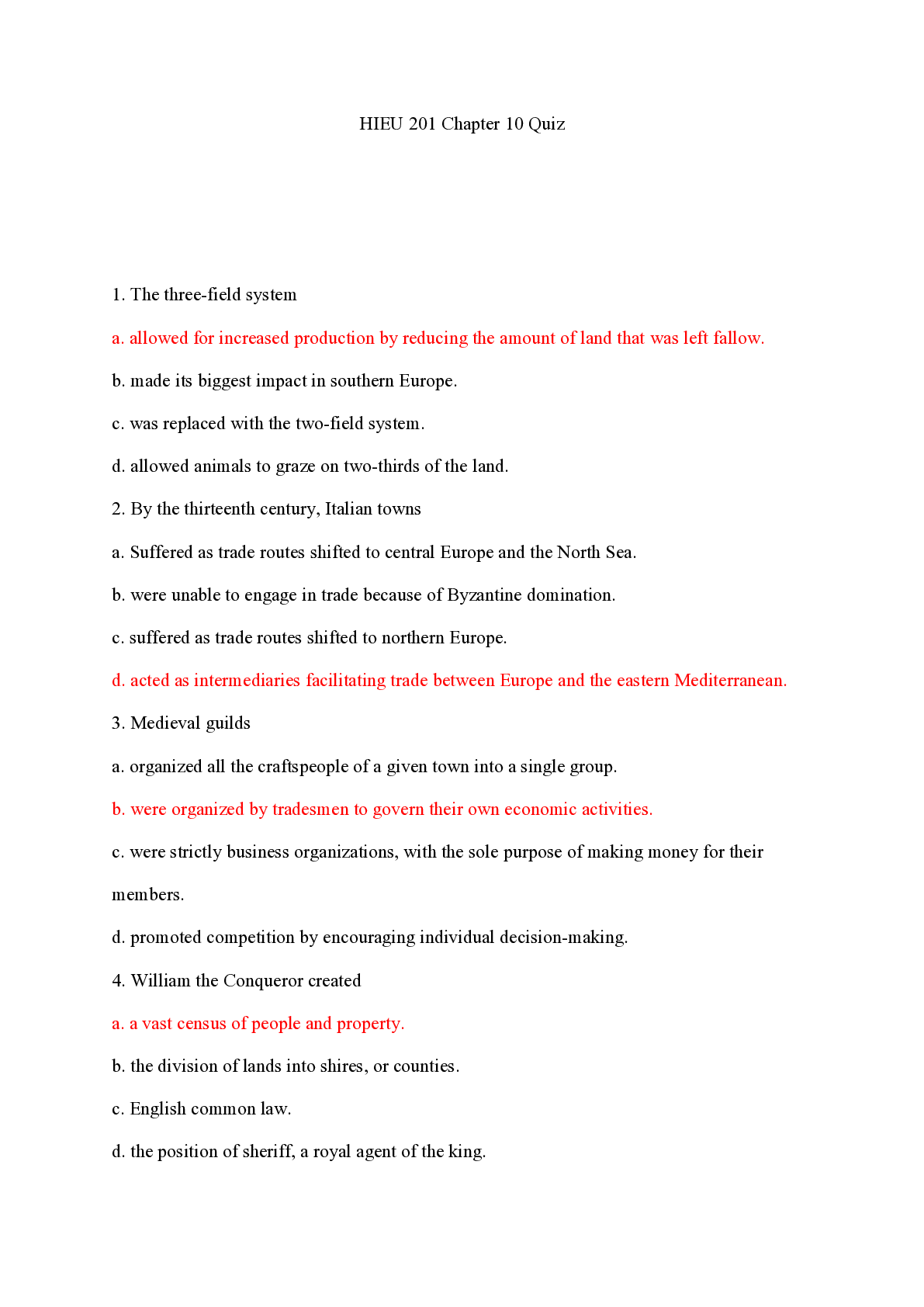
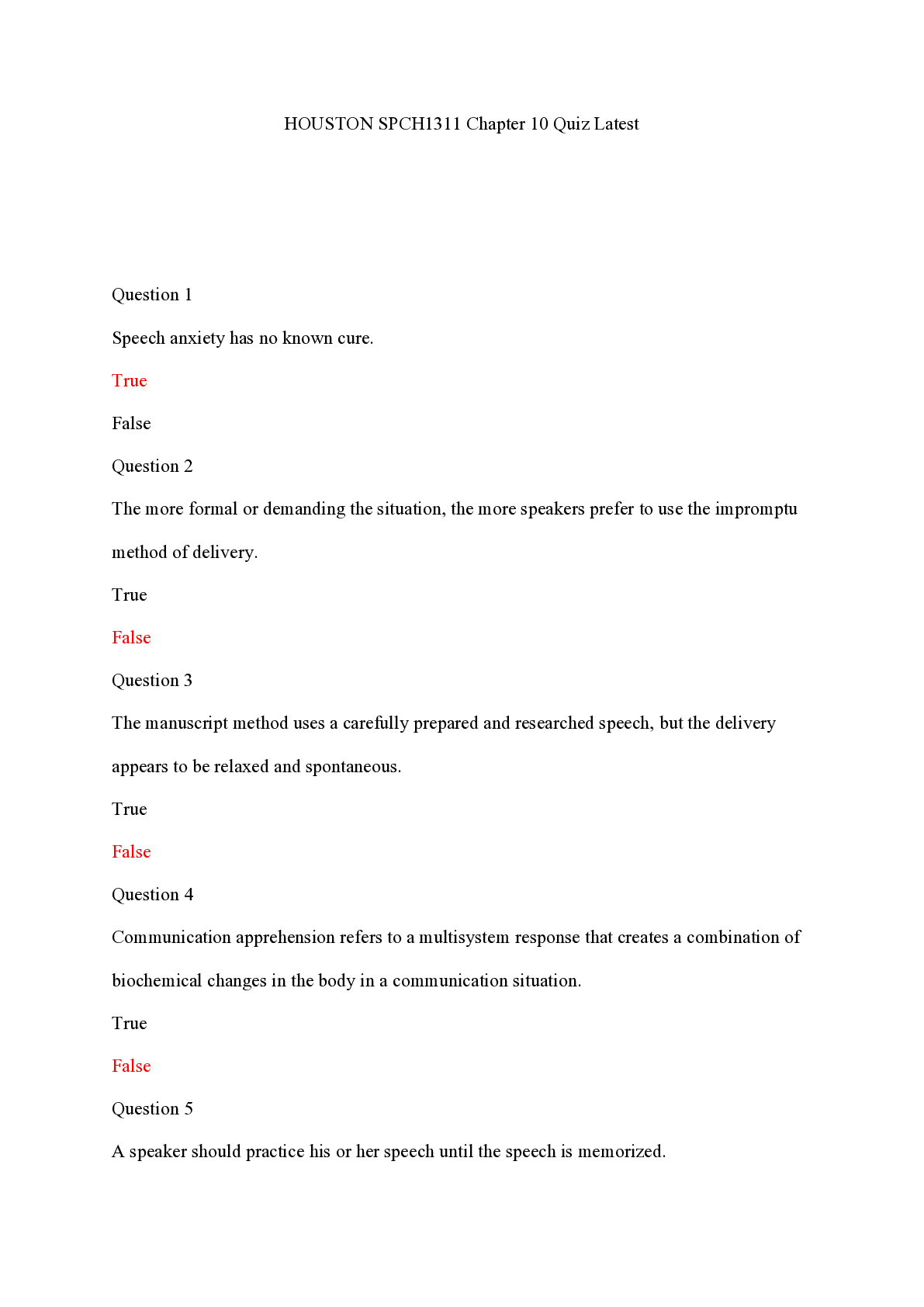
_removed.png)
